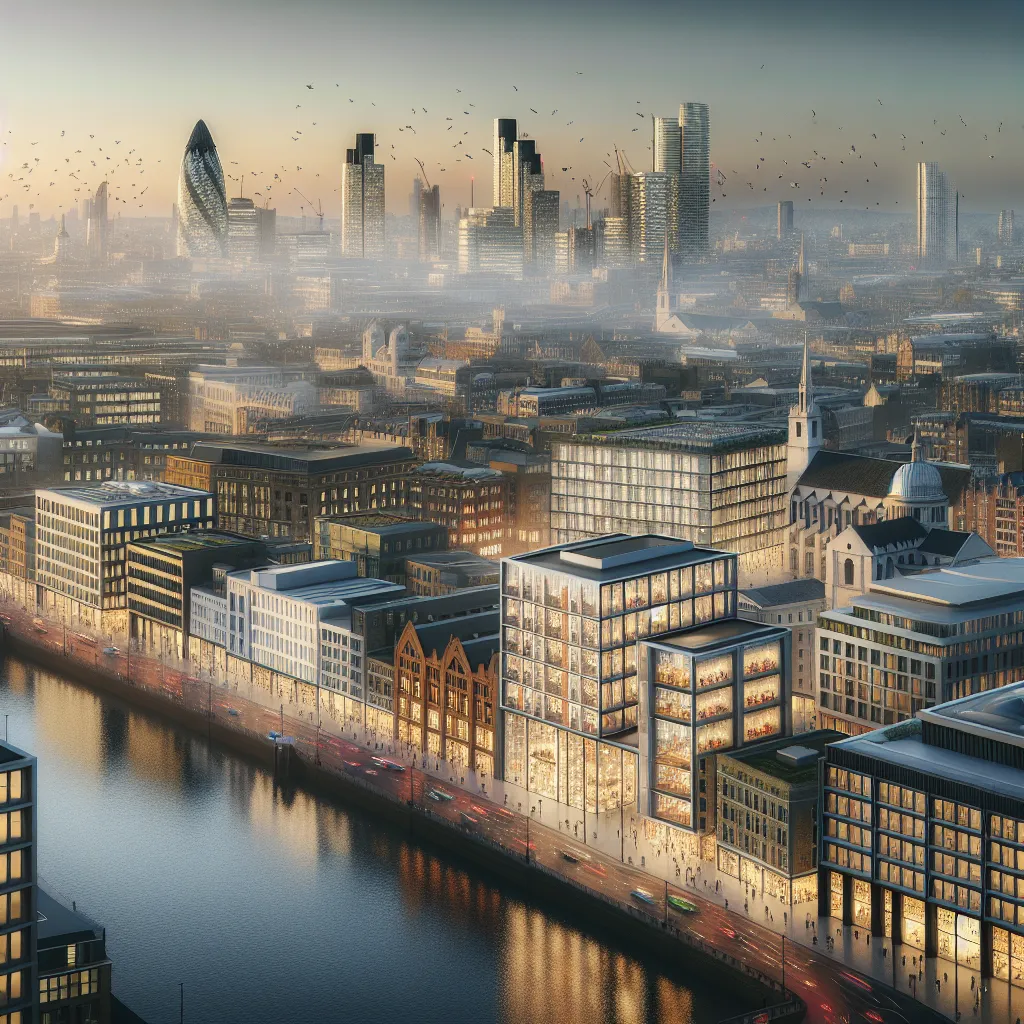Did you know that commercial real estate in London isn’t just about towering office buildings? It’s a dynamic canvas that paints the future of business innovation, creativity, and urban development. From quirky Shoreditch offices to sprawling Fulham pubs, the commercial real estate scene in London is nothing short of fascinating. The capital city offers a mosaic of opportunities for investors, developers, and entrepreneurs alike, making it a vibrant hub for commercial activities.

What Is Commercial Real Estate?
Commercial real estate (CRE) refers to properties used exclusively for business purposes. This encompasses a wide array of property types, including office spaces, retail outlets, warehouses, and more. The spectrum of CRE is vast, catering to diverse business needs across various sectors.
Understanding CRE
Understanding the nuances of CRE is like piecing together a complex puzzle. It involves aspects such as location desirability, tenant dynamics, lease structures, and market trends. In London, areas like Shoreditch and Fulham are buzzing with commercial activity, each offering unique characteristics and opportunities.
Types of Commercial Real Estate
Let’s explore the different types of commercial real estate in London:
- Office Spaces: From skyscrapers in the City to creative hubs in Shoreditch.
- Retail Outlets: Including high street shops and expansive shopping centers.
- Industrial Properties: Warehouses and distribution centers on the city’s outskirts.
- Mixed-Use Developments: Combining residential, commercial, and retail spaces.
The Intricacies of Commercial Leases
Navigating commercial leases can feel like deciphering an ancient scroll. In London, lease agreements often include specific terms and conditions tailored to the property’s use and location. Here’s a quick peek at the types of leases you might encounter:
- Single Net Lease: Tenant pays property taxes.
- Double Net Lease: Tenant covers taxes and insurance.
- Triple Net Lease: Tenant is responsible for taxes, insurance, and maintenance.
- Gross Lease: Landlord covers all property expenses, while tenant pays a fixed rent.
Managing CRE: The Art of Balance
Managing commercial real estate requires a delicate balance between tenant needs and property upkeep. It’s akin to conducting an orchestra—each instrument (or task) must be in harmony to ensure the property’s success. Real estate management firms often play a crucial role in maintaining this balance, offering services from tenant screening to property maintenance.
How Investors Make Money with Commercial Real Estate
Investing in CRE can be a lucrative endeavor, much like finding a needle in a haystack that turns out to be a golden opportunity. Investors reap benefits through:
- Rental Income: Long-term leases provide steady cash flow.
- Property Appreciation: Selling property at a higher value than the purchase price.
- Tax Benefits: Depreciation and mortgage interest deductions.
Direct vs. Indirect Investment
Investors can dive into CRE through direct ownership or opt for indirect investments like Real Estate Investment Trusts (REITs). Direct investment involves purchasing and managing properties, whereas REITs offer a more hands-off approach, allowing investors to buy shares in a portfolio of real estate assets.
Pros and Cons of Commercial Real Estate
As with any investment, CRE comes with its own set of advantages and challenges. Let’s weigh them:
| Pros | Cons |
|---|---|
| High yielding source of income | Requires significant capital |
| Long-term tenant relationships | Complex regulations and management |
| Potential for substantial appreciation | Susceptible to economic downturns |
The Role of AnySqft’s AI-Driven Platform
In this evolving market, AnySqft’s AI-driven platform emerges as a game-changer. It simplifies the buying, selling, and renting process by providing data-driven insights and connecting clients with top agents. This innovative approach ensures that both landlords and tenants have a smooth and informed real estate journey.
Commercial Real Estate in the Context of COVID-19
The pandemic has reshaped many sectors, and CRE is no exception. While some areas have seen a decline in demand, others, like industrial properties, have thrived due to the e-commerce boom. The future of office spaces remains fluid, with hybrid work models influencing demand.
CRE Forecast: What’s on the Horizon?
The CRE landscape in London is poised for growth, with sectors like retail and industrial leading the charge. As the city continues to evolve, opportunities for investment and development are boundless. Whether you’re a seasoned investor or a curious newcomer, London’s commercial real estate offers a treasure trove of potential.
Commercial real estate in London is more than just bricks and mortar; it’s a vibrant ecosystem where innovation meets opportunity. By embracing the complexities and leveraging tools like AnySqft’s platform, investors and entrepreneurs can navigate this dynamic landscape with confidence and foresight.
What is Commercial Real Estate?
Commercial Real Estate (CRE) refers to properties used for business purposes, such as:
- Office Spaces
- Retail Outlets
- Industrial Properties
- Multi-family Units
Why Invest in CRE?
- Stable Income: Long-term leases ensure consistent cash flow.
- Appreciation Potential: Properties often increase in value over time.
- Tax Benefits: Investors can take advantage of various tax deductions.
Utilizing AnySqft’s AI-driven platform simplifies the process of buying, selling, and renting commercial properties. Discover how you can maximize your investment potential with AnySqft today!